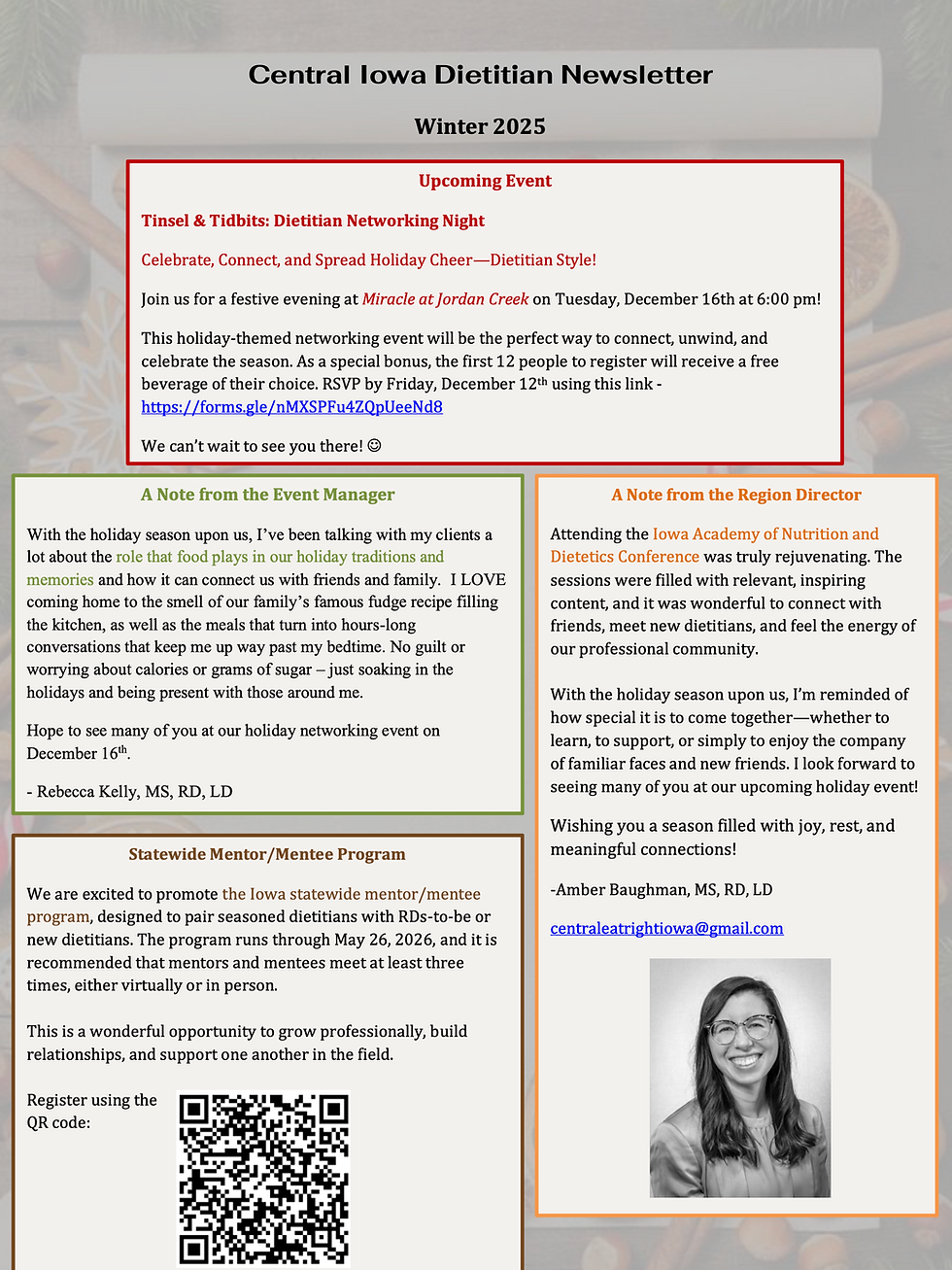How to Make Slow-Cooking Work for You!
- eatrightiowa
- Jan 21, 2020
- 3 min read
January is National Slow Cooking Month and it’s no surprise why: many of us need some easy, healthy meals after a busy holiday season. But other than roasts and soups, some recipes can be tricky to perfect in a slow-cooker. Selecting the right slow-cooker for your needs, the right recipe, and reading instructions are all key ways to make delicious slow-cooked meals. My family is in need of a new slow-cooker soon. We have a large programmable one that fits most of our recipes. However, it is older and handed down to us, and the settings often over-cook the meals we make in it. We also have a smaller, manual slow cooker, but it doesn’t fit the size of recipes we like to make (no room for leftovers!). So it’s probably time for a new slow cooker that meets our needs!

How to select the right slow cooker for your lifestyle:
Slow cookers come in a variety of sizes, often ranging from 1-10 quarts. The recipes you make and the size of your household will influence what size slow cooker you need. You may need a smaller one for dips and a larger one for family meals.
Slow cookers can often come with manual or programmable settings. A manual setting is useful if you need to cook something while out of the house. You can set it to low and leave it on most of the day. If the power goes out briefly, the slow cooker will likely come back on to the same heat setting. However, if you do not know how long the power was out, you may want to discard the food for safety reasons.
A programmable slow cooker often has low settings for 6-10 hours and high settings for 4-6 hours. They will turn to a warm setting once the time has been reached. These types of cookers won’t turn back on if the power goes out. You should discard this food if the power goes out and you are unsure for how long.
Keep in mind some of these tips & tricks for food safety and quality in a slow cooker:
For food safety, start with fresh or thawed meat–not frozen. In a slow cooker, frozen meat won’t likely rise through the temperature danger zone (40-140 degrees F) fast enough to eliminate bacteria.
Use chunks rather than large cuts of meat to help the meat climb through the temperature danger zone faster and become fully cooked.
Cooker should be ½ to ¾ full for best results. Filling a slow cooker too full or not filling enough may under or over-cook meals.
Check internal temperature to make sure food reaches 160°F.
Keep the lid on. This helps food cook adequately and reach the appropriate temperature in the time you have set/programmed.
Add dairy ingredients or pasta toward the end of cooking. Adding milk, cream, or cheese in too early can cause it to burn. Pasta added too early may absorb too much liquid and become soggy.
Add dried herbs at the beginning of cooking time because the flavor releases slowly into the dish. Add fresh herbs at the end of cooking so they don’t lose flavor over the long cooking process.
For More Information:
Check out a slow cooker class, part of the ISU Extension Healthy and Homemade series offered state-wide. Classes can be found here: https://www.extension.iastate.edu/humansciences/

Blog Post Provided by: Ann Parker












Comments